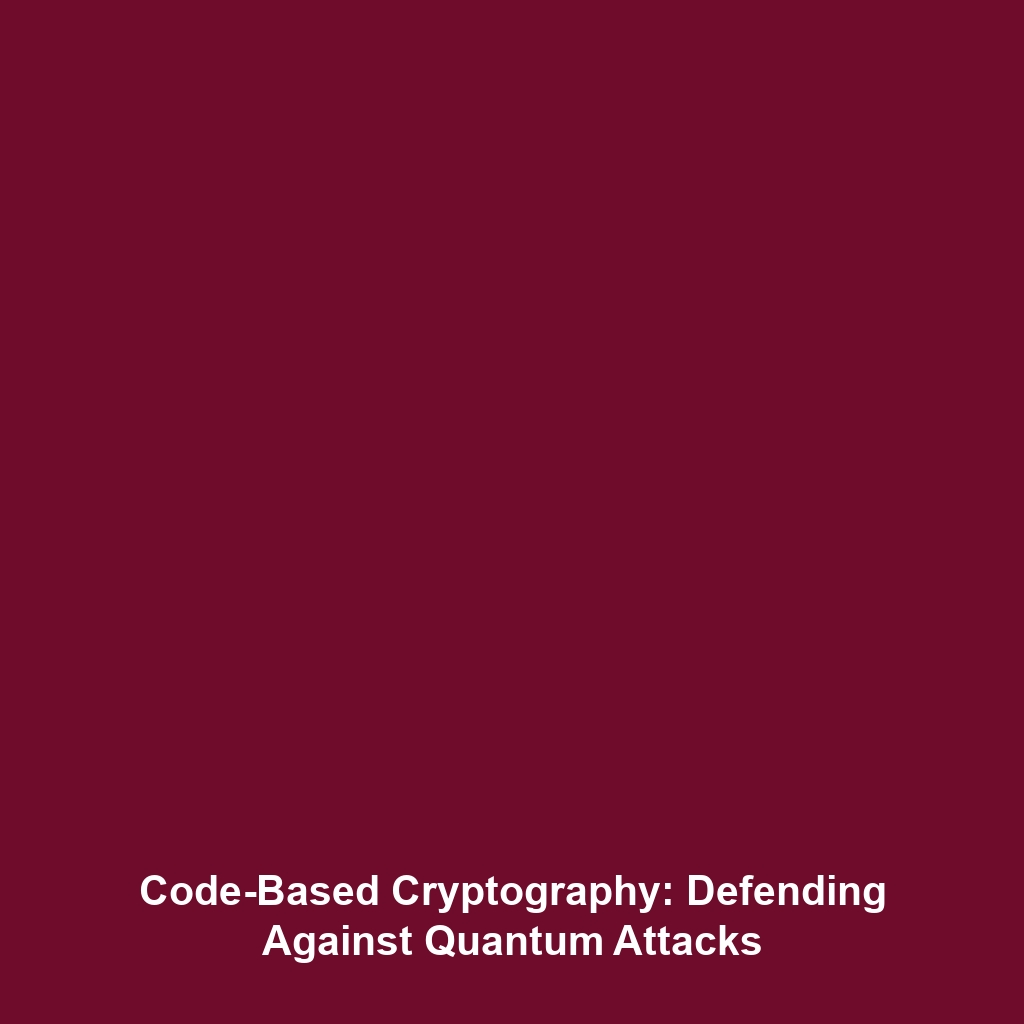Code-Based Cryptography: Leveraging Error-Correcting Codes to Resist Quantum Decryption Techniques
Introduction
Code-Based Cryptography has emerged as a crucial area of research in the field of Cryptography, particularly in the face of quantum computing threats. By utilizing error-correcting codes, this innovative cryptographic approach offers enhanced resistance to potential quantum decryption techniques that could undermine traditional cryptographic systems. As the world advances towards quantum computing, understanding and developing effective countermeasures such as Code-Based Cryptography becomes increasingly vital. This article explores its fundamentals, applications, challenges, and potential future developments within the broader context of Cryptography.
Key Concepts
Principles of Code-Based Cryptography
At its core, Code-Based Cryptography relies on mathematical constructs known as error-correcting codes. These codes are designed to detect and correct errors in data transmission, making them invaluable for secure communication. There are several key concepts related to this field:
- Error-Correcting Codes: Frameworks that enable the identification and correction of errors in encoded messages.
- Quantum Resistance: The capability of cryptographic systems to withstand attacks from quantum computers.
- Public Key Infrastructure: A system facilitating secure communication through asymmetric keys generated based on error-correcting codes.
Applications and Real-World Uses
Code-Based Cryptography has significant implications for various sectors, offering robust solutions that leverage error-correcting codes to enhance security. Key applications include:
- Secure Communications: Organizations utilize code-based systems to safeguard sensitive data against quantum threats.
- Digital Signatures: Incorporating error-correcting codes ensures the integrity and authenticity of digital signatures.
- Encrypted Storage Solutions: Code-Based Cryptography can protect personal and corporate data stored in cloud services.
These applications highlight how Code-Based Cryptography is employed in Cryptography to maintain data security.
Current Challenges
The implementation and study of Code-Based Cryptography face several challenges, including:
- Computational Complexity: The need for extensive computational resources can hinder real-time applications.
- Algorithm Optimization: Developing efficient algorithms for both encoding and decoding processes remains a critical challenge.
- System Integration: Integrating code-based systems with existing cryptographic protocols may pose compatibility issues.
These challenges highlight the ongoing issues in applying Code-Based Cryptography within the broader scope of Cryptography.
Future Research and Innovations
Future research in Code-Based Cryptography is poised to lead to exciting advancements, focusing on areas such as:
- Next-Generation Algorithms: Innovations in algorithms that increase the efficiency of error correction in real-time systems.
- Integrative Solutions: Research aimed at simplifying the integration of code-based techniques with current technologies.
- Enhanced Security Protocols: Developing protocols that fortify data protection against evolving quantum threats.
These innovations are essential for maintaining effective Cryptography as technological landscapes evolve.
Conclusion
In conclusion, Code-Based Cryptography represents a promising avenue for securing data against quantum decryption techniques. By leveraging error-correcting codes, this methodology not only enhances the robustness of cryptographic systems but also addresses the pressing challenges posed by the advent of quantum computing. As the field continues to expand, further research and innovations will be critical in ensuring the integrity and security of future cryptographic applications. For more related insights and advancements in Cryptography, explore our articles on Quantum Cryptography and Error-Correcting Codes in Modern Security.

Leave a Reply